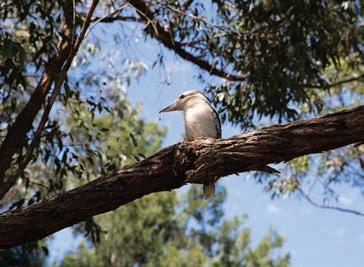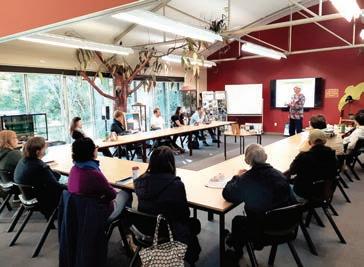
1 minute read
Natural Areas
Ryde Biodiversity Plan

Works included
• Upgrade of the Kittys Creek Walking Trail, including construction of sandstone steps and native plantings. This project has improved safety and access for the local community and encouraged more park users to explore the bushland area along Kittys Creek.
• Implementation of Saltmarsh Management Plan to guide the management of this very special endangered ecological community along the Parramatta River foreshore and at Field of Mars Reserve. This included community education, saltmarsh signage, a workshop, and ongoing bush regeneration to help expand the endangered saltmarsh.
• City of Ryde partnered with Macquarie University for a study into the effectiveness of our Wildlife Protection Areas, with monitoring of compliance and a community survey. The study highlighted opportunities for further education and promotion of Wildlife Protection Areas in Ryde.


• Protection of bushland included weed control activities and the installation of bollards at McCauley Park to help protect a small patch of remnant bushland. Sandstone boulders were installed at Pellisier Road, Putney to protect the hard work of the Bushcare volunteers regenerating the bushland at the site.
• Biodiversity Education Strategy implementation commenced with the development of a bush-friendly neighbour brochure to educate the community on the importance of our bushland areas and how they can help protect it, create habitat in their backyard, control environmental weeds and protect our waterways. The brochure was distributed to 2,800 residents that live near bushland in the City of Ryde.
• An online Habitat Havens for Native Birds webinar was hosted during National Bird Week to showcase the diversity of native birds found in the City of Ryde. Attendees were able to learn about how they can create a bird habitat in their gardens to help attract our feathered friends.
• Corridor plantings at ELS Hall Park along Shrimptons Creek to improve the habitat corridor. 550 plant species consisting of trees, shrubs and groundcovers were installed to strengthen the vegetation corridor and provide habitat for native wildlife.









